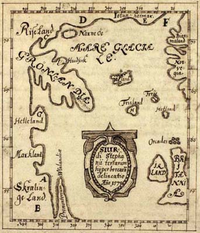Historical climatology

Historical climatology is like looking at really old pictures of the weather. Just like how you can look at pictures from when you were a baby and see how much you’ve grown, historical climatology looks at really old records to see how the climate and weather have changed over time.
Back in the olden days, they didn’t have fancy weather stations or computer models to predict the weather. Instead, people would record things like how hot or cold it was, how much it rained, or how windy it was in their diaries, letters, or newspapers. We can use these records to help us understand what the weather was like a long time ago.
Scientists who study historical climatology can learn a lot from these old records. They can use them to see how the climate has changed over hundreds or thousands of years. For example, they can see if the earth has been getting warmer or colder over time. They can also see if certain parts of the world are getting drier or wetter or if there are more hurricanes or tornadoes now than there were before.
Scientists use this information to try to understand how the climate is changing today and what might happen in the future. By studying old weather records, they can learn about patterns and trends in the climate and predict what kind of weather we might have in the future. This helps us plan for changes in the weather, such as building stronger houses to withstand storms or preparing for droughts.
So, historical climatology is all about looking at old records of the weather to learn about how the climate has changed over time and how it might change in the future.
Back in the olden days, they didn’t have fancy weather stations or computer models to predict the weather. Instead, people would record things like how hot or cold it was, how much it rained, or how windy it was in their diaries, letters, or newspapers. We can use these records to help us understand what the weather was like a long time ago.
Scientists who study historical climatology can learn a lot from these old records. They can use them to see how the climate has changed over hundreds or thousands of years. For example, they can see if the earth has been getting warmer or colder over time. They can also see if certain parts of the world are getting drier or wetter or if there are more hurricanes or tornadoes now than there were before.
Scientists use this information to try to understand how the climate is changing today and what might happen in the future. By studying old weather records, they can learn about patterns and trends in the climate and predict what kind of weather we might have in the future. This helps us plan for changes in the weather, such as building stronger houses to withstand storms or preparing for droughts.
So, historical climatology is all about looking at old records of the weather to learn about how the climate has changed over time and how it might change in the future.
Related topics others have asked about:
